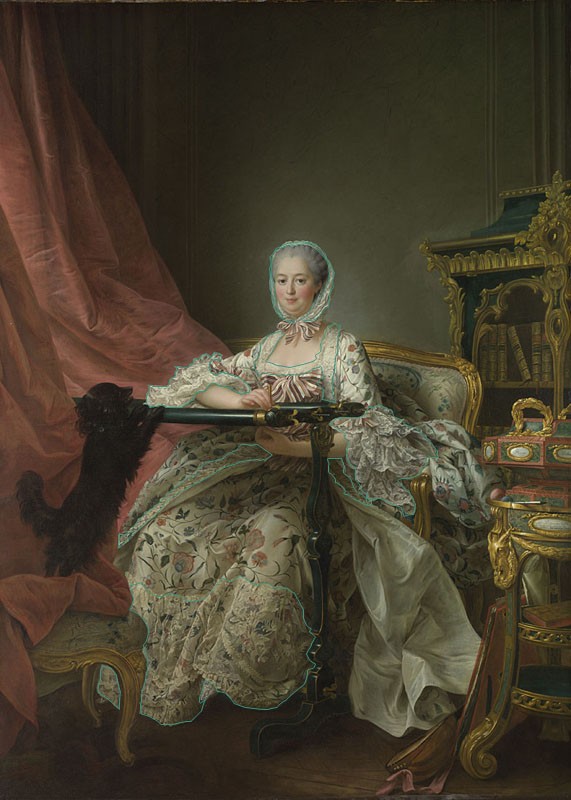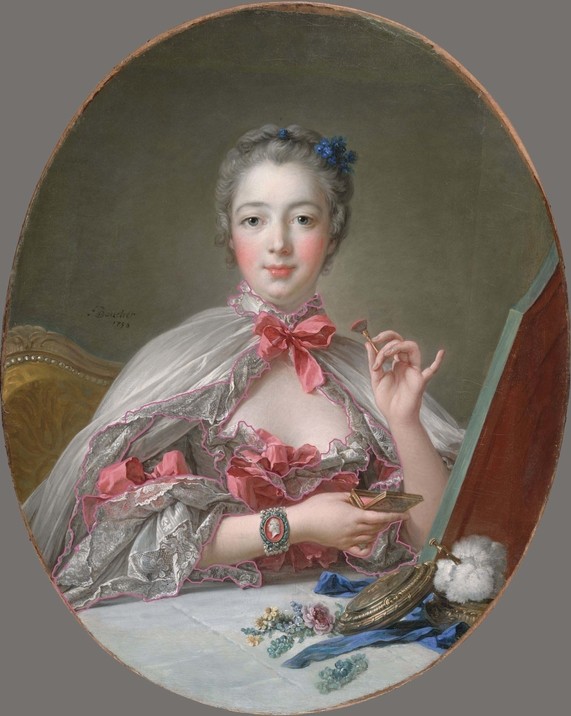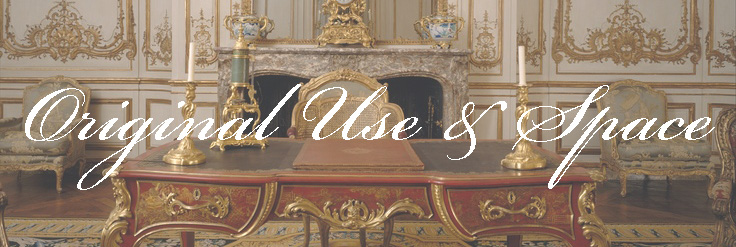
François-Hubert Drouais, Madame de Pompadour at her Tambour Frame, (ca.1763-4), Bought, 1977. The National Gallery, London. Annotated image by Constance Zhou. Stoke outlines all the lace on Madame de Pompadour’s dress and headdress in order to demonstrate the amount of lace that were used.
French Court ladies and gentlemen highly valued the grandeur of appearance. The advantages of fortune were largely spent on ostentatious dresses. In this portrait, Madame de Pompadour is wearing a sumptuously embroidered silk dress edged with yards of lace. The highly translucent lace was applied to many parts of the dress, including the trimming around neck, headdress, sleeves and flounce.
Above is last portrait of Madame de Pompadour before her death. Through this portrait, she is sending out message to the public by her confident gaze, those symbolic objects displayed in the room, as well as the depiction of large amount of lace that dominate the central portrait surface.

François Boucher, Jeanne-Antoinette Poisson, Marquise de Pompadour (ca.1750), Fogg Museum, Bequest of Charles E. Dunlap. Annotated image by Constance Zhou. Stoke outlines all the lace on Madame de Pompadour’s peignoir in order to demonstrate the amount of lace that were used.
This portrait catches her at exquisite moment of self-satisfied aftermath of make-up in her boudoir. Here, lace is applied to a lovely, wafty peignoir, both on the crinkly bow at the throat and along the trimming of milky expanse, on the sleeves, in front of her chest. This rich application of airy and delicately patterned lace works well with the peignoir and bow ties that were also made of very soft material, probably muslin or fine linen. In this portrait, lace serve the same purpose as the conspicuous display of her jewel at the center of the whole portrait — both of them discourse the wealth and social class.
Click here to “Intricacy of Lace.”
Pages
practice
